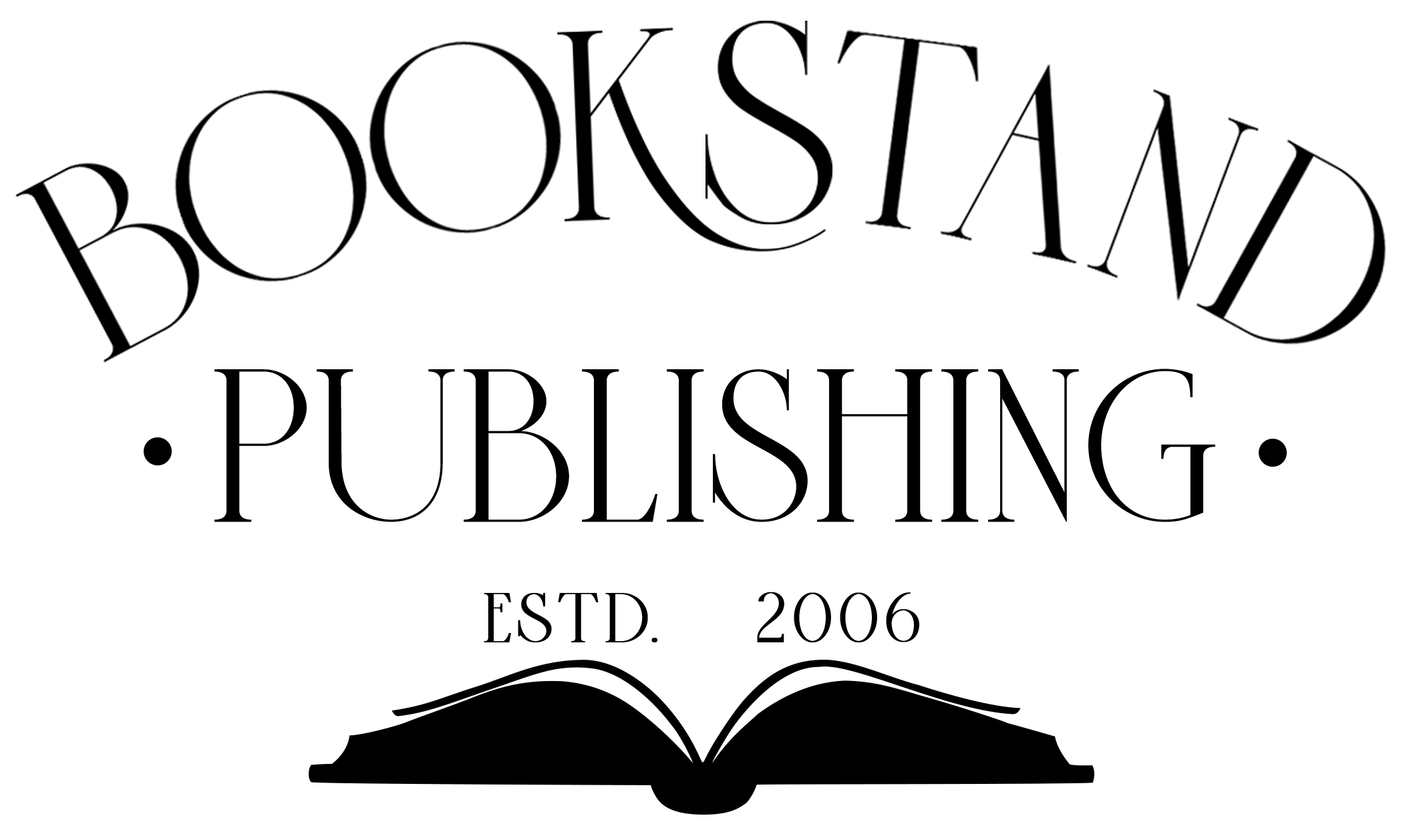Books are generally divided into three parts: The frontmatter, the body of the book, and the backmatter.
Keep in mind that there is no book that has all of these parts. Use this list instead to make sure you have the right content in the right category, and that elements of your book appear in the sequence in which they are expected.
Normally, unless otherwise noted, each of these items should start on a right hand page.
Frontmatter
The Frontmatter are the pages at the beginning of a book before the body of the book. These pages are traditionally numbered with lowercase roman numerals.
Half title Page—Sometimes called the Bastard Title. This page contains only the title of the book and is the first page you see when opening the cover.
Title Page—Contains the title, subtitle, author and publisher of the book.
Copyright Page—Is on the reverse of the Title Page, and contains the copyright notice, publisher information, the ISBN number, Library of Congress number, and printing information (usually “Printed in the United States of America”). Legal notices, credits for illustrations or cover design are also commonly listed on the page.
Dedication—Not every book carries a dedication but, for those that do, it is opposite the copyright page. A dedication is always personal. Professional acknowledgements go on the Acknowledgements page or in the Preface.
Foreword—An introductory essay written by someone other than the author. The Foreword is always signed, usually with the Foreword author’s name, and title. Please note that the Foreword (literally meaning “the word before”) should never be spelled as Forward.
Preface—An introductory essay written by the author that tells how the book came into being, followed by thanks and acknowledgments to people who were helpful to the author during the time of writing. The Preface is usually signed with the author name, place and date. .
Acknowledgments—The author expresses their gratitude for help in the creation of the book. The acknowledgement page should not be more than 1 page. If you have a Preface page that includes acknowledgements, then you do not need a separate Acknowledgements page.
Introduction—Here the author introduces the material that is covered in the work. Typically, an author tells the reader what will be revealed in greater detail if they continue reading.
Table of Contents—Also known as the Contents page, this page lists all the major divisions of the book including parts and chapters and their page numbers. Depending on the length of the book, a greater level of detail may be provided to help the reader navigate the book.
Please note, you should include all your Front Matter in your Table of Contents (with the exception of the Title and Copyright Pages), even though they come before the Table of Contents.
A Table of Contents should start on a right hand page, unless it requires the use of two pages, in which case it should start on the left hand side.
Prologue—In a work of fiction, the Prologue sets the scene for the story and is told in the voice of a character from the book, not the author’s voice.
Body
The Body is the main portion or body of the book. These pages are traditionally numbered with Arabic numerals with page 1 beginning with the first text of the main body (which means page 1 is usually the first page of the first chapter).
Parts—Both fiction and nonfiction books are often divided into parts when there is a large conceptual, historical or structural logic that suggests these divisions.
Chapters—Most fiction and almost all nonfiction books are divided into chapters for the sake of organizing the material.
Backmatter
The Backmatter are the pages after the body of the work.
Epilogue or Epilog—A short essay, in the voice of the author, that brings closure to the work.
Afterword—An Afterword either covers how the book was created (in which case you would not have a Preface) or it is written by someone other than the author, seeking to put work in some wider context (often done if the work is being reissued after many years)
Postscript— The postscript is a final “PS” note at the end of a book, providing additional information that doesn’t fit as part of the story or main point of the book.
Appendix —A supplement to the main work. An Appendix typically includes referenced documents cited in the text, or articles peripherally related to the subject of the book.
Notes—If your main text requires notes to amplify or document certain passages throughout the text, please arrange the notes by chapter in a notes section.Glossary—An alphabetical list of terms and their definitions, helpful in understanding the terms referenced frequently in the book.
Bibliography—The bibliography section lists the sources for works used in your book. Be sure to arrange the sources alphabetically by the author’s last name.
Index—An alphabetical listing of people, places, events, and subjects cited along with page numbers. This is typically done for a scholarly, non-fiction book.
About the Author—A brief biography, nor more than 1 page, about the author. This is typically the last page of a book and is on the left hand side. The author biography should either be on the last page of the book, or on the cover of the book (but not both).
Article Tags
Books are generally divided into three parts: The frontmatter, the body of the book, and the backmatter.
Keep in mind that there is no book that has all of these parts. Use this list instead to make sure you have the right content in the right category, and that elements of your book appear in the sequence in which they are expected.
Normally, unless otherwise noted, each of these items should start on a right hand page.
Frontmatter
The Frontmatter are the pages at the beginning of a book before the body of the book. These pages are traditionally numbered with lowercase roman numerals.
Half title Page—Sometimes called the Bastard Title. This page contains only the title of the book and is the first page you see when opening the cover.
Title Page—Contains the title, subtitle, author and publisher of the book.
Copyright Page—Is on the reverse of the Title Page, and contains the copyright notice, publisher information, the ISBN number, Library of Congress number, and printing information (usually “Printed in the United States of America”). Legal notices, credits for illustrations or cover design are also commonly listed on the page.
Dedication—Not every book carries a dedication but, for those that do, it is opposite the copyright page. A dedication is always personal. Professional acknowledgements go on the Acknowledgements page or in the Preface.
Foreword—An introductory essay written by someone other than the author. The Foreword is always signed, usually with the Foreword author’s name, and title. Please note that the Foreword (literally meaning “the word before”) should never be spelled as Forward.
Preface—An introductory essay written by the author that tells how the book came into being, followed by thanks and acknowledgments to people who were helpful to the author during the time of writing. The Preface is usually signed with the author name, place and date. .
Acknowledgments—The author expresses their gratitude for help in the creation of the book. The acknowledgement page should not be more than 1 page. If you have a Preface page that includes acknowledgements, then you do not need a separate Acknowledgements page.
Introduction—Here the author introduces the material that is covered in the work. Typically, an author tells the reader what will be revealed in greater detail if they continue reading.
Table of Contents—Also known as the Contents page, this page lists all the major divisions of the book including parts and chapters and their page numbers. Depending on the length of the book, a greater level of detail may be provided to help the reader navigate the book.
Please note, you should include all your Front Matter in your Table of Contents (with the exception of the Title and Copyright Pages), even though they come before the Table of Contents.
A Table of Contents should start on a right hand page, unless it requires the use of two pages, in which case it should start on the left hand side.
Prologue—In a work of fiction, the Prologue sets the scene for the story and is told in the voice of a character from the book, not the author’s voice.
Body
The Body is the main portion or body of the book. These pages are traditionally numbered with Arabic numerals with page 1 beginning with the first text of the main body (which means page 1 is usually the first page of the first chapter).
Parts—Both fiction and nonfiction books are often divided into parts when there is a large conceptual, historical or structural logic that suggests these divisions.
Chapters—Most fiction and almost all nonfiction books are divided into chapters for the sake of organizing the material.
Backmatter
The Backmatter are the pages after the body of the work.
Epilogue or Epilog—A short essay, in the voice of the author, that brings closure to the work.
Afterword—An Afterword either covers how the book was created (in which case you would not have a Preface) or it is written by someone other than the author, seeking to put work in some wider context (often done if the work is being reissued after many years)
Postscript— The postscript is a final “PS” note at the end of a book, providing additional information that doesn’t fit as part of the story or main point of the book.
Appendix —A supplement to the main work. An Appendix typically includes referenced documents cited in the text, or articles peripherally related to the subject of the book.
Notes—If your main text requires notes to amplify or document certain passages throughout the text, please arrange the notes by chapter in a notes section.Glossary—An alphabetical list of terms and their definitions, helpful in understanding the terms referenced frequently in the book.
Bibliography—The bibliography section lists the sources for works used in your book. Be sure to arrange the sources alphabetically by the author’s last name.
Index—An alphabetical listing of people, places, events, and subjects cited along with page numbers. This is typically done for a scholarly, non-fiction book.
About the Author—A brief biography, nor more than 1 page, about the author. This is typically the last page of a book and is on the left hand side. The author biography should either be on the last page of the book, or on the cover of the book (but not both).







